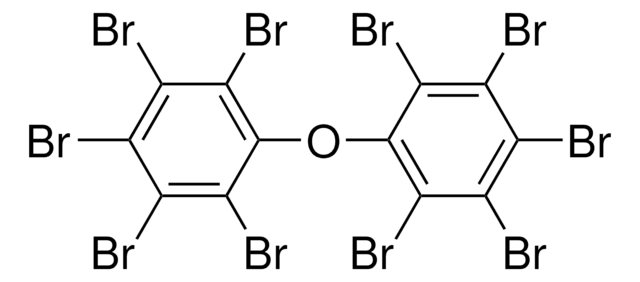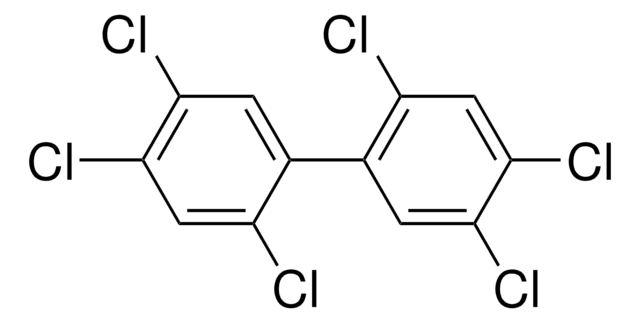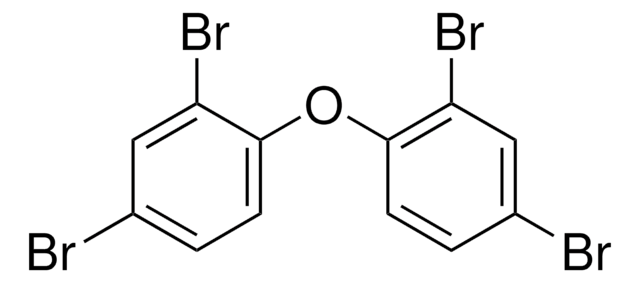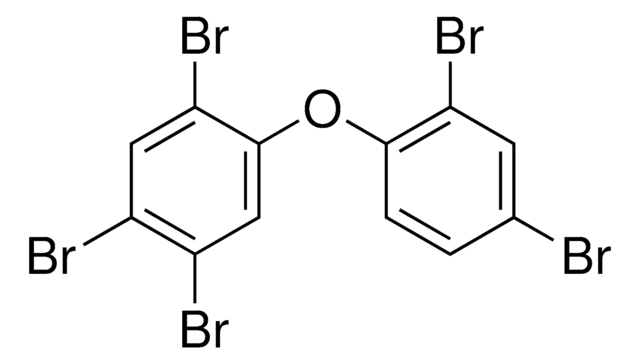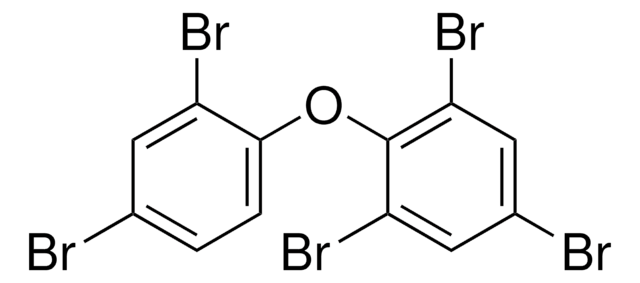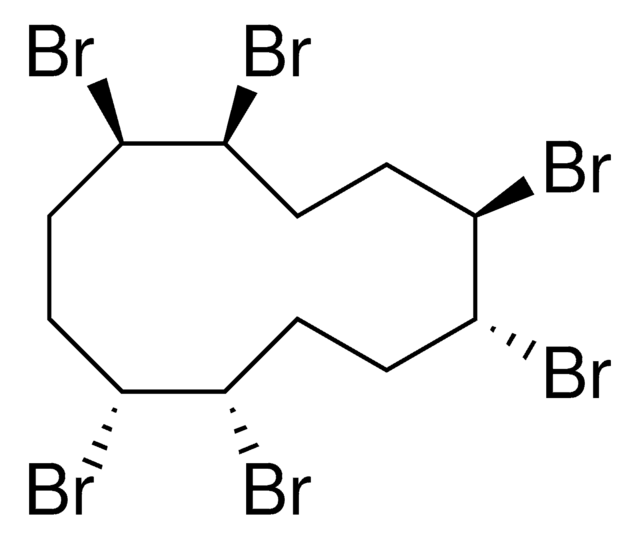91408
BDE No 37
analytical standard
Synonyme(s) :
3,4,4′-TriBDE, 3,4,4′-Tribromodiphenyl ether
Sélectionner une taille de conditionnement
215,00 $
Sélectionner une taille de conditionnement
About This Item
215,00 $
Produits recommandés
Qualité
analytical standard
Niveau de qualité
Essai
≥98.0% (GC)
Durée de conservation
limited shelf life, expiry date on the label
Pf
48-52 °C
Format
neat
Chaîne SMILES
Brc1c(ccc(c1)Oc2ccc(cc2)Br)Br
InChI
1S/C12H7Br3O/c13-8-1-3-9(4-2-8)16-10-5-6-11(14)12(15)7-10/h1-7H
Clé InChI
YALAYFVVZFORPV-UHFFFAOYSA-N
Catégories apparentées
Produits recommandés
Mention d'avertissement
Danger
Mentions de danger
Conseils de prudence
Classification des risques
Aquatic Acute 1 - Aquatic Chronic 1 - Eye Dam. 1
Code de la classe de stockage
11 - Combustible Solids
Classe de danger pour l'eau (WGK)
WGK 3
Point d'éclair (°F)
Not applicable
Point d'éclair (°C)
Not applicable
Faites votre choix parmi les versions les plus récentes :
Certificats d'analyse (COA)
Vous ne trouvez pas la bonne version ?
Si vous avez besoin d'une version particulière, vous pouvez rechercher un certificat spécifique par le numéro de lot.
Déjà en possession de ce produit ?
Retrouvez la documentation relative aux produits que vous avez récemment achetés dans la Bibliothèque de documents.
Active Filters
Notre équipe de scientifiques dispose d'une expérience dans tous les secteurs de la recherche, notamment en sciences de la vie, science des matériaux, synthèse chimique, chromatographie, analyse et dans de nombreux autres domaines..
Contacter notre Service technique
